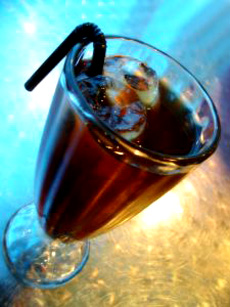Glossary Of Natural & Artificial Non-Caloric SweetenersPage 4: Sugar Alcohols This is Page 4 of an 11-page article. Click on the red links below to visit other pages. This glossary is protected by copyright and cannot be reproduced in whole or part. You are welcome to link to it.
|
 It looks like sugar, but it’s xylitol, one of the sugar alcohols. Photo courtesy Made-In-China.com. You can buy xylitol online. |
|||
|
Sugar Alcohol
Sugar alcohols occur naturally in fruits and vegetables. They are natural products. They have calories, though significantly fewer calories than regular sugars because they are not completely absorbed by the body. This allows products that use sugar alcohols for sweeteners to be labeled “sugar-free” or “reduced-calorie.” (Sugar-free does not mean calorie-free.) As a group, the sugar alcohols are not as sweet as sucrose (table sugar)—xylitol, for example, is derived from corn instead of sugar cane, and is approximately 5% less sweet than sugar. It also has a much lower glycemic rating and far fewer calories (see the list below). But they don’t do everything. For example, sugar alcohols do not brown when heated, so can’t be substituted when caramelization is required. As a group, the sugar alcohols are not as sweet as sucrose (table sugar)—xylitol, for example, is derived from corn instead of sugar cane, and is approximately 5% less sweet than sugar. It also has a much lower glycemic rating and far fewer calories (see the list below). But they don’t do everything. For example, sugar alcohols do not brown when heated, so can’t be substituted when caramelization is required. Because the body absorbs sugar alcohols slowly and incompletely, they produce a lower blood glucose response and are appropriate for diabetics. In addition, because bacteria in the mouth cannot metabolize sugar alcohols as rapidly as sugar, sugar alcohols do not contribute to tooth decay.
|
 While soft drinks can be sweetened with less expensive non-nutritive substitutes, such as aspartame, sucralose and ace-K, baked goods and candy benefit from the costlier nutritive sweeteners known as sugar alcohols. Photo courtesy SXC. |
|||
|
However, ingesting large amounts of a sugar alcohol can cause gas, abdominal discomfort and/or diarrhea (similar to lactose intolerance), due to fermentation by intestinal bacteria. For this reason, food products containing sugar alcohols are labeled, “Excess consumption may have a laxative effect.” The FDA classifies sugar alcohols as “generally recognized as safe” (GRAS), and they are approved as food additives. The group of sugar alcohols includes the following, listed along with their associated calories/gram. Sugar has 4 calories/gram; thus, isomalt, lactitol and maltitol have half the calories of sugar, along with a lower glycemic index.
As with the other nutritive sweeteners like table sugar, brown sugar, honey, and syrups, different sugar alcohols work better in different applications. Expense of production also impacts a manufacturer’s decision to use one over another. |
||||
Last Updated Jun 2018
© Copyright 2005-2025 Lifestyle Direct, Inc. All rights reserved. All images are copyrighted to their respective owners.